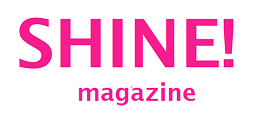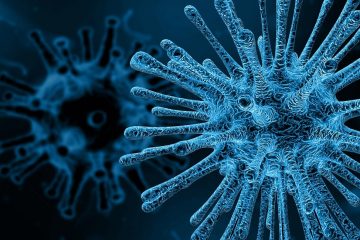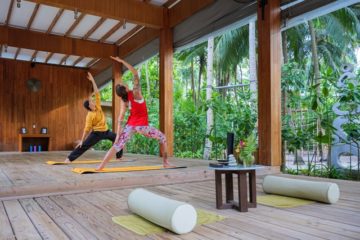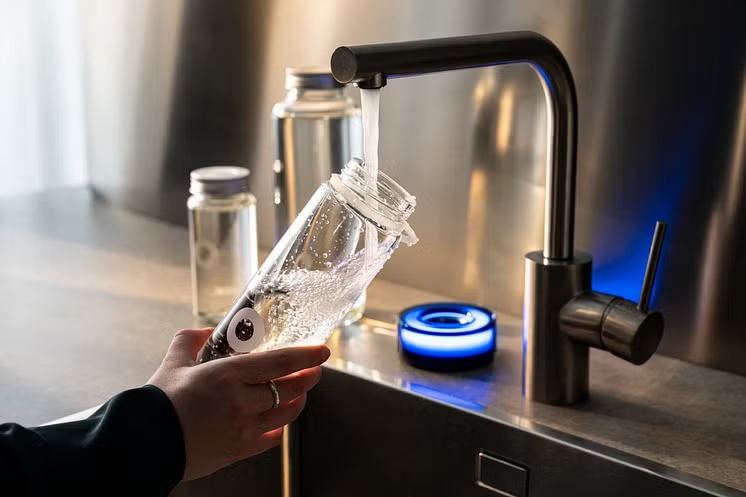Yoga specialist Hannah Barrett gives advice from her latest book “Strength Through Yoga” (with Finola Burrell).
The early weeks of having a baby can be a killer on the upper body with the constant carrying, feeding and rocking. We have designed the following yoga flow to relieve pains associated with feeding and carrying a newborn, to reduce anxiety and to promote relaxation. These gentle stretches were a lifesaver for me in the early weeks.
This yoga sequence can be done in any order, as separate poses or as a whole and whenever required. It can be used as soon as you feel like you need it after birth with the exception of those noted.

The movements help to target the neck muscles commonly aggravated such as the upper trapezius, scalenes and cervical extensors, the back muscles including the the erector spinae, quadratus lumborum, pectoral muscles and arm muscles including your triceps and latissimus dorsi.
It is slow and restorative, promotes relaxation and aims to reduce anxiety. Hold each pose for as long as your body needs and move slowly in between the poses. If you’ve had a C-section you want to avoid stretching the stomach for six weeks until the scar has healed. Therefore, please modify melting heart and cat cow as suggested.
Legs up on the wall
– Bring the hips to the wall, with the upper body flat and sit bones as close to the wall as is comfortable.
– Gently raise the legs straight up, resting them against the wall.
– Option to place a bolster under your sacrum to ease any discomfort
in the lower back and help to hinge at the hips (rather than pulling
on the lower back).
– If you have time, stay here for 5-15 minutes (or longer).
BENEFITS:
– relaxation,
– lower back pain relief,
– helps regulate blood pressure,
– helps calm the nervous system and quieten the mind, – helps drain fluid from the legs, and
– helps to improve your digestion.
Restorative supta baddha konasana
– Lying on the back, with the arms alongside your body, palms up and shoulders relaxed. Bringing the feet together, gently letting the thighs fall open as you carefully draw the heels toward the pelvis (the feet can be as far away or as close to your body as comfortable).
– Place a blanket or blocks under the knees for support.
– Use blankets, pillows or bolsters behind the back, head and arms for ultimate relaxation. Stay
for as long as needed.
WATCH POINT – Make sure the knees are supported. An extended hold can impact the connective tissue which is still vulnerable until at least five months postpartum and possibly longer if still breastfeeding. If any pain in the lower back please come out of the pose.
BENEFITS:
– increases blood circulation in the lower abdomen,
– improves digestion,
– stretches the inner thighs,
– increases range of external rotation in the hips,
– helps calm the nervous system, and opens the heart and chest reducing tightness on mid and upper back.
Restorative Matsyasana
– Place a pillow, bolster or block horizontal to the short edge of your mat about a foot and a half away from the back of the mat.
– Option to place another pillow or block for your head at the back of the mat. Gently lie back over the prop(s) bringing the bottom edge just below the tips of the shoulder blades (approximately level with where the bottom of your bra strap sits) and the other under your head (if desired).
– Melt the body over the prop and place the arms to the side or overhead – whatever is most comfortable. Stay for 1-2 minutes or more. When exiting the pose gently roll to one side and remove the prop(s).
BENEFITS:
– improves digestion,
– relieves tension in your neck, throat, and shoulders,
– helps calm the nervous system, and
– opens the heart and chest reducing tightness on the mid and upper back.
WATCH POINT for c-section – Keep your arms to your side and have your head supported with a pillow or another block to avoid extending backwards.
Arm and elbow rotations
– In a kneeling or comfortable seated position, bring each hand to the opposite shoulder.
– Keeping the arms still, use the back to move the elbows and draw figure of eights and infinity signs.
– Lead the movement from the upper back, not the arms or elbows.
– Perform the movements for five deep breaths in each direction.
BENEFITS:
– increases mobility in the upper back, and – helps release tension in the upper back.
Cow face arms
– Bring the right arm up and over the head rotating it so the palm rests between the shoulder blades.
– Either bring the left arm overhead holding on to the elbow or if you have the shoulder flexibility bring the arm behind your back gripping on to the right hand.
– Firm the shoulder blades against the back ribs and lift the chest.
– Try to keep the right arm beside the right side of the head.
– Hold for five deep breaths or more. Repeat on the opposite side.
BENEFITS:
– helps release tension in the upper back and arm muscles.
– opens the heart and chest reducing tightness on the mid and upper back.
Chest opener
– In a comfortable seat, interlink the fingers behind the back.
– Inhale, reaching the arms back opening the chest and exhale as you bend the elbows and bring the hands to the right hand side of your body, keeping the chest open and shoulder blades squeezing together.
– Hold for 5 deep breaths or more. Repeat on the opposite side.
BENEFITS:
– Opens the heart and chest reducing tightness on the mid and upper back.
Cat & Cow
– Starting in tabletop, inhale into cow pose tilting your pelvis forwards (so that your tailbone sticks up) arching the spine and breathing the chest forwards (keep engaging the core by pulling the navel in). Gaze forwards, keeping the neck long.
– Exhale into cat pose tucking the pelvis under, rounding the back, relaxing the head and pushing the ground away to pull your shoulder blades away from your spine.
– Continue moving through cow and cat for five full breaths.
BENEFITS:
– strengthens and stretches the spine and neck and improves flexibility,
– calms the nervous system,
– opens the heart and chest reducing tightness on the mid and upper back
– massages and stimulates organs in the stomach, like the kidneys and adrenal glands.
WATCH POINT for C-section – only perform the cat movement and return to a neutral spine rather than the cow pose until more than six weeks postpartum.
Shoulder and neck release
– Breathe slowly as you roll your shoulders 3-5 times in both directions.
– Continue breathing slowly as you move your neck up down and side to side 3-5 times in each
direction.
BENEFITS:
– relieves tension in your neck, throat and shoulders.
More info: https://www.yogagirllondon.com














